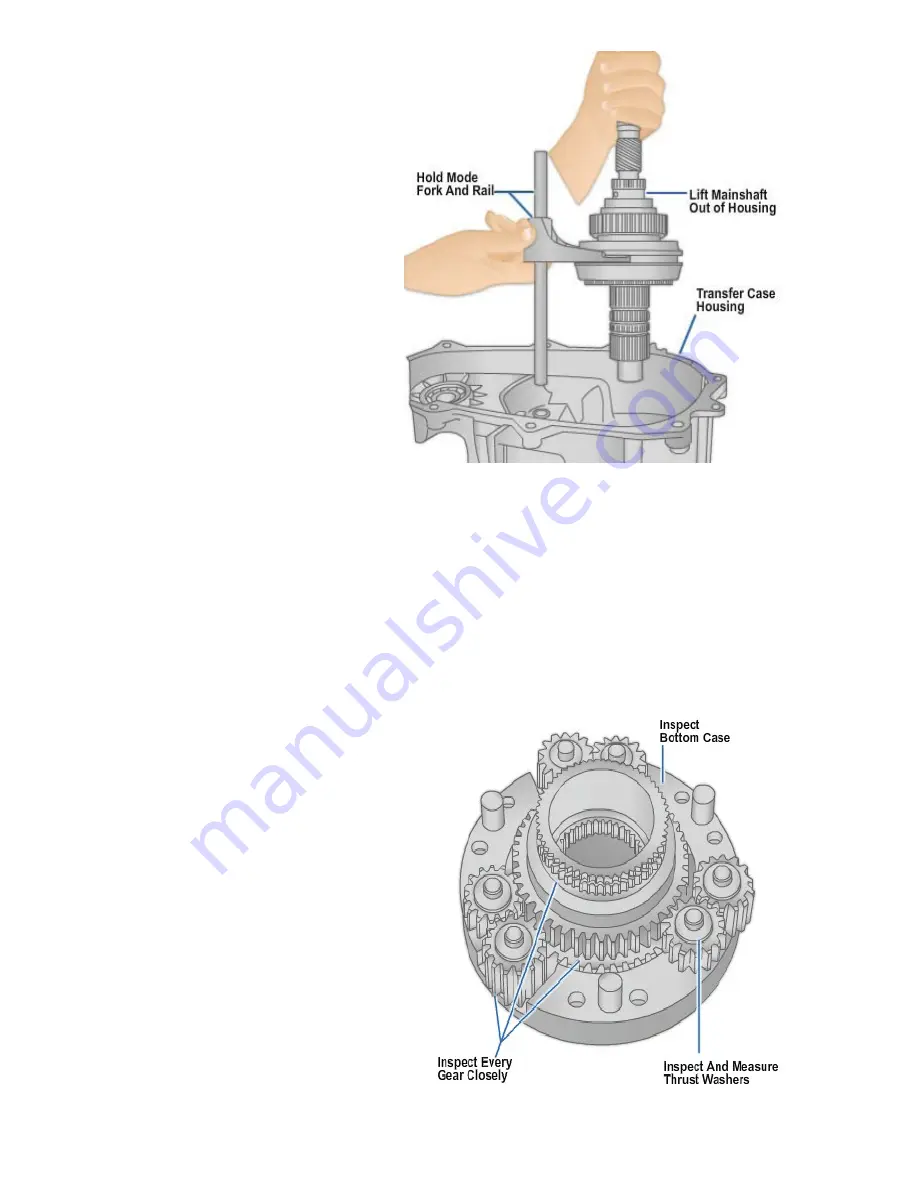
Figure 8-28
shows a mechanic
removing a mainshaft, complete
with gears, shift fork, and rail.
Removal procedures for other
parts are similar. Some transfer
cases do not have an input shaft.
Instead, the transmission output
shaft is splined to the inside of
the transfer case input gear.
Remove the differential unit,
viscous coupling, or clutch drum
as applicable.
If the transfer case is equipped
with a drive chain, lift the front
output shaft, sprocket, and chain
out of the case. In many transfer
cases, the chain and sprockets
are removed as an assembly. In
some designs, however, it is
necessary to slide the chain off
the mainshaft drive sprocket
during the removal process. After
removing the chain and
Figure 8-28 - Removal of mainshaft,
complete with gears, shift fork, and rail.
sprockets, carefully remove any thrust washers that were located under the sprocket.
While disassembling the transfer case, note the relationship of all parts so that they can
be reinstalled properly. If necessary, mark the parts with a punch or a scribe to ensure
proper assembly.
2.2.3 Transfer Case Inspection
Before inspecting the transfer
case parts, scrape all gasket
material from the transfer case
housing, being careful not to
damage the surfaces. Check the
bottom of the housing for needle
bearings or other small parts.
Clean the inside of the housing
and all internal parts. Make sure
all sludge and metal particles are
removed.
After cleaning, thoroughly inspect
the transfer case housing,
bearing retainers, and extension
housings for cracks or other
damage. Additionally, check all
bushings and seals for wear.
All internal transfer case parts
should be inspected for wear and
damage. Examine all shaft
bearings, needle beatings, shift
NAVEDTRA 14050A
Figure 8-29 - Check planetary gear
assembly.
8-38
















































